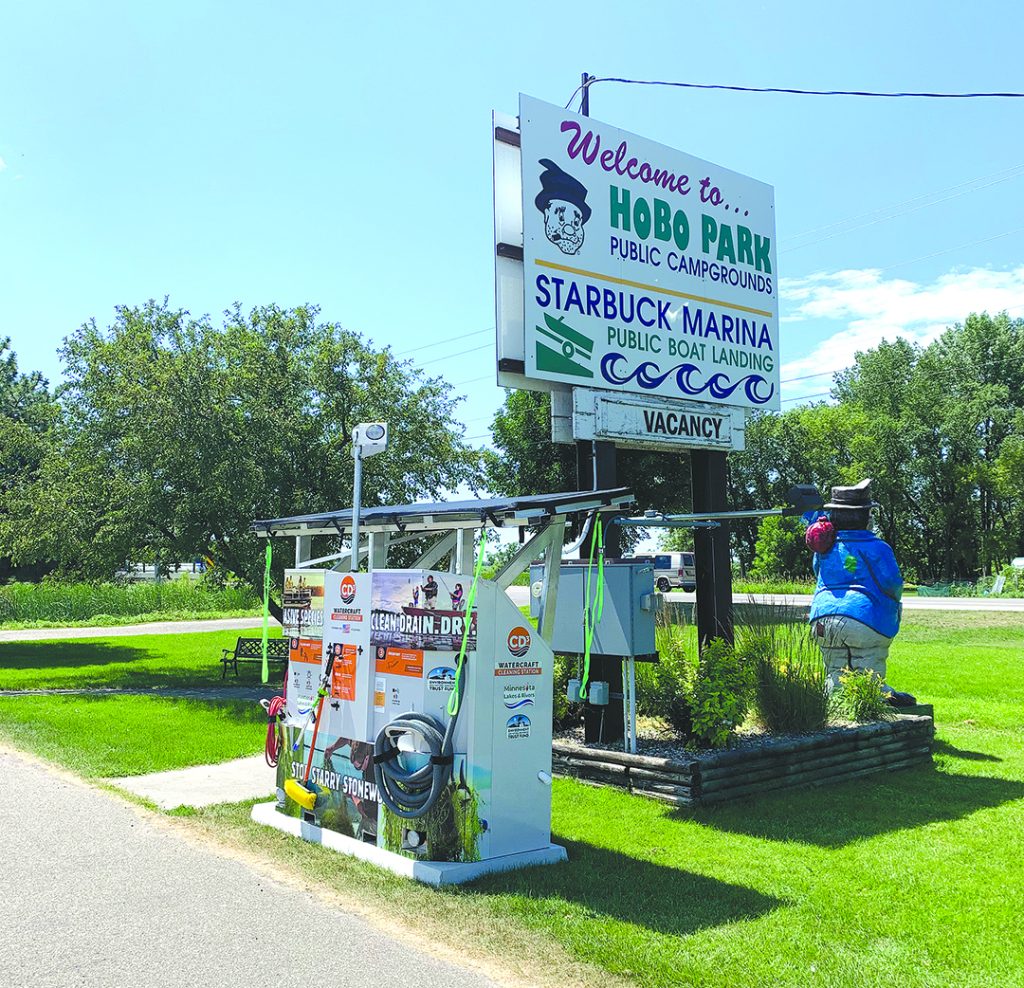Starbuck gets two new self-service boat cleaning stations
News | Published on July 18, 2022 at 11:55am CDT

Hobo Park on Lake Minnewaska in Starbuck now has increased protection from Starry Stonewort and other aquatic invasive species.
Two new, self-service, solar-powered, boat cleaning stations known as CD3 Wayside Solar units that are manufactured in the U.S. by CD3 Systems were installed last week. The stations will help deter the spread of this deadly AIS for the rest of the boating season this year and into the future.
The added AIS protection stems from $1 million dollars in funding that was included in the 2021 House and Senate Environment and Natural Resources Trust Fund (ENRTF), which would put boat-cleaning stations on each access on every lake that has been infested with Starry Stonewort in Minnesota.
“Starry Stonewort can spread rapidly – even in winter under ice — and is an exceptionally dangerous AIS. It is expensive and difficult to manage with mechanical removal or chemicals and is easily spread by boaters. The new units will help prevent further spread by providing boaters with the tools they need to completely clean, drain and dry as they leave the boat landing,” notes Jeff Forester, Executive Director of Minnesota Lakes and Rivers Advocates (MLR). “Use of the stations is an imperative containment strategy.”
“Research by the Minnesota Aquatic Invasive Species Research Center shows that lakes within a 50- mile radius of an infested waterbody are at much higher risk of infestation,” Forester adds. “By containing Starry stonewort in the few lakes where it already exists, we hope to protect all of the other lakes in Pope County and others nearby.”
Starry Stonewort is a relatively new-to-Minnesota AIS, and it is perhaps the most concerning one in the state at present. For example, in 2015, a 260-acre patch of starry stonewort was discovered in Lake Koronis in Stearns County near the DNR water access site. By spring 2016 starry stonewort covered thousands of acres along the shore.
The economic foundation in lake districts of Minnesota is largely lake-based tourism. Starry stonewort, more than other AIS species in Minnesota, poses significant risks to tourism. In many of the rural counties, lake shore property makes up more than 50% of the tax base. Thus, it poses significant risks to both lake ecology and local economies:
·Starry stonewort grows from 2 to 25 feet deep.
·It is an algae and not a vascular plant, and so is more difficult to control with chemical treatments.
·It can grow on many different substrates, but prefers gravel and sand bottoms, i.e., spawning habitat.
·Its growth response is triggered by the same water temperature that triggers panfish and bass reproduction.
·It prefers high quality waters, which can threaten a range of uninfected water bodies.
·Lake Koronis spent over $800,000 to treat the infestation the first few years and now spends over $200,000 annually to keep the public access open for use.




